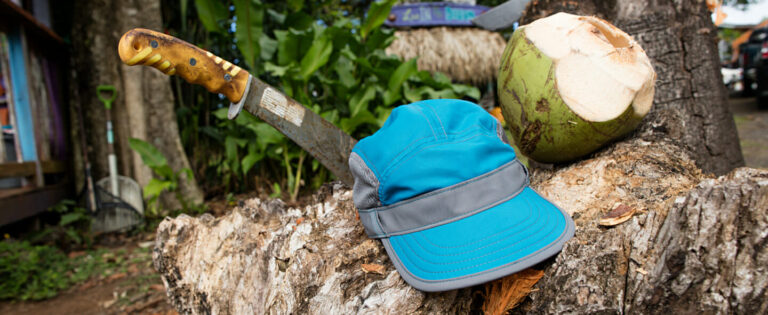In a nutshell, modal fabric is a mix of both synthetic and natural fibres.
But let’s first take a look at how modal came about. It was created in the 60s during a search for new textile materials whose raw materials can be grown in central Europe.
For a long time, the textiles that emerged were used for specialty garments. However, ever since the interest in both an outdoor-lifestyle and sustainability grew, the demand of such fabrics (such as modal) has grown exponentially.
Synthetic or natural?
Modal is a fibre obtained from beech tree pulp, that is chemically processed and is one of the nine regenerated fibres distributed in the world that consists of naturally renewable (“regenerated”) raw materials. Some other known regenerated fibres in the outdoor industry include viscose and Tencel. Plus, these fabrics are made using wood’s cellulose and are, therefore, called “chemical natural fibres” in contrast to pure natural fibres and synthetic fibres.
Modal is a “structurally-modified viscose with a higher degree of polymerisation (above 400 to 700) compared to normal viscose“. Due to this molecular ‚update‘, modal obtains more functional advantages compared to viscose and is sometimes referred to as “the better viscose.” One of its advantages includes its amazing tensile strength when wet, which is especially useful for outdoor use. Also, modal is more durable, abrasion-resistant and is less prone to shrinkage compared to viscose.
In addition, two types of modal with slightly different functional emphases have been developed: a Polynosic (PN) type that can be optimally blended with cotton and a HWM (High Wet Modulus) type, which features a higher breaking strength and tensile strength. You can read more about this topic in the properties section.
How is it manufactured?
As already mention, modal is made from a raw material called beech wood. While viscose can be produced from various basic materials, modal is exclsuively made from beech wood. Now, let’s take a look at the production process: the wood is first debarked and chipped. Then, these chips are processed using a multi-stage chemical solution process and are then spun mechanically with a spinneret to form the fibres. As a result, cellulose fibres are produced.
Properties
Modal has the ability to combine the advantages of natural and synthetic fibres, without taking on any of their disadvantages. Therefore, modal is a lot more durable than cotton, but still offers the equivalent amount of comfort. And, in comparison to other synthetic fibres, such as polyester, it provides just as much moisture management and feels even softer against the skin.
Both comfort and a pleasant microclimate are modal’s greatest advantages thanks to the fabric’s ability to absorb water and quickly wick away moisture. Plus, modal absorbs 50% more moisture than cotton. Another advantage: the fabric is super breathable, which now brings us to modal’s amazing functionality. Modal is particularly stretchy, durable, dimensionally stable, insensitive to heat and easy to care for. In other words, you can throw it into the washing machine and in the dryer without fear of damage, shrinkage or change of colour. And no matter how many times modal gets wet, it won’t affect its durability.
Up to now, modal has mainly been processed in fibre blends, where it often has a positive effect on the other fibres’ properties. For instance, cotton becomes softer, silk becomes more durable and linen becomes stretchier.
Feel and comfort
When it comes to comfort, modal is equally impressive. Its fibres’ smooth surface ensures not only softness, but also comfort and a silky sheen. Speaking of which, when touching modal, it’ll feel as if you’re touching silk.
So it’s not surprising that modal is pleasant on the skin and great for both allergy sufferers and individuals with sensitive skin. As a result of its softness, you’ll mainly find modal in your underwear and other garments that are worn close to the skin. And, despite its softness, garments made from modal and modal blends don’t “sag”, but rather provide a great fit. This is due to the fact that the fabric is elastic, maintains its shape and remains comfortable even after several washes.
Modal for outdoor use

Modal is typically used to make underwear, shirts and long sleeve tops, as this is where its functionality really shines through.
Since modal is cooling rather than warming, it isn’t very windproof or weatherproof. Therefore, modal’s amazing properties are best suited for strenuous activities and in hot temperatures. However, to create warm outdoor base layers, modal can be combined with merino wool to balance the temperature inside the garment (as if you were wearing an air conditioner).
Is model sustainable?
When comparing modal to natural fibres, such as cotton, or synthetic fibres, such as polyester, you’ll notice that modal stands-out in terms of functionality and eco-friendliness. Plus, in the field of synthetic/natural regenerated fibres, modal is a close-second to TENCEL Lyocell. However, the latter fabric is produced exclusively by the Austrian company Lenzing AG. As a result, modal is likely to be more readily available in the long term and a tad cheaper. In addition to the TENCEL Lyocell, the company also produces a particularly eco-friendly modal fibre called “Modal Edelweiss”.
In terms of sustainability, the eco-friendly modal is better-than-average in terms of water consumption, energy consumption, land use, use of pesticides and pollutants, and waste products compared to natural and synthetic fibres. And, unlike synthetic fibres, the production of modal doesn’t involve the use of raw fossil materials, such as petroleum and natural gas. It’s even more sustainable than natural materials, such as organic cotton, because less water and energy are needed to produce and process modal. As an example, the above-mentioned “Modal Edelweiss” from Lenzing is produced in a closed cycle, where 95% of the chemicals are recovered after use.
Care
As always, when buying a new garment made from modal, you should keep and read the instructions indicated on the care label. Although modal is very easy to care for, you’ll get the most out of it with the right care. So, here are a few simple tips:
- Washing the garment with the quick wash cycle prevents unnecessary stress to the fabric.
- Reducing the spin speed to a maximum of 600 rpm will also reduce this stress.
- Modal can also be ironed at a low or medium temperature. But luckily, ironing is usually not necessary, since the fabric doesn’t crease.






